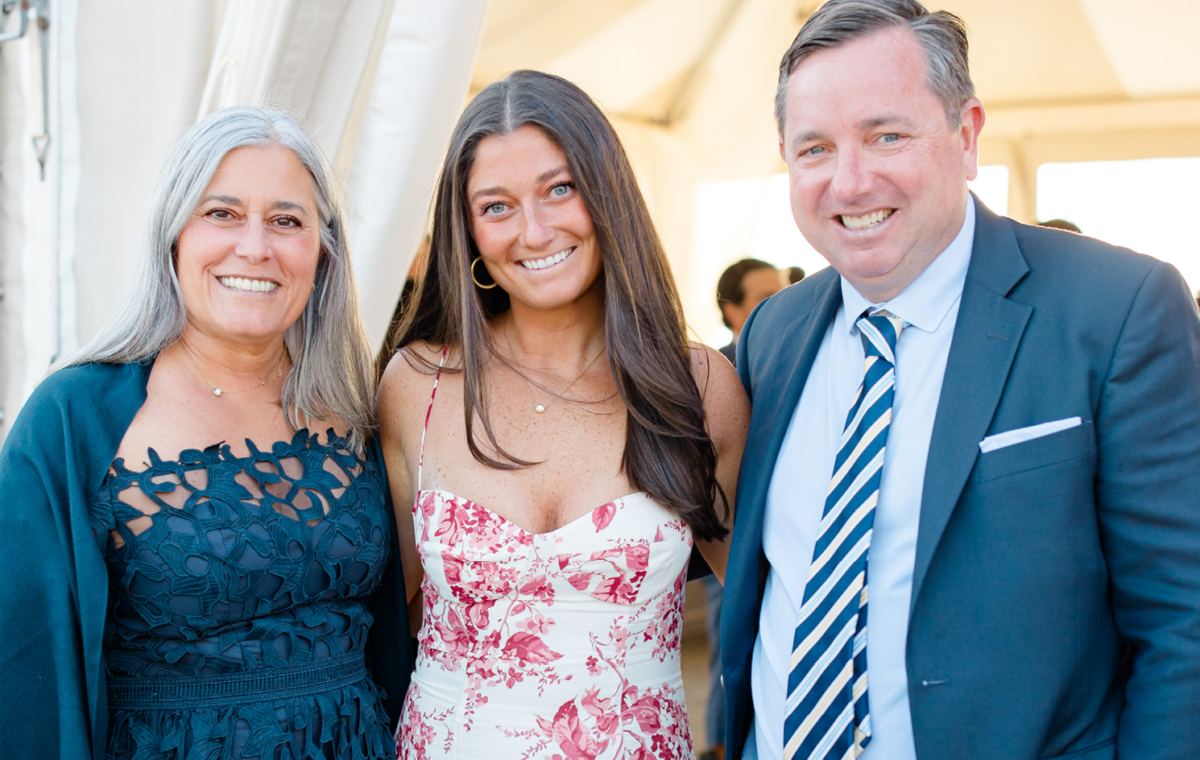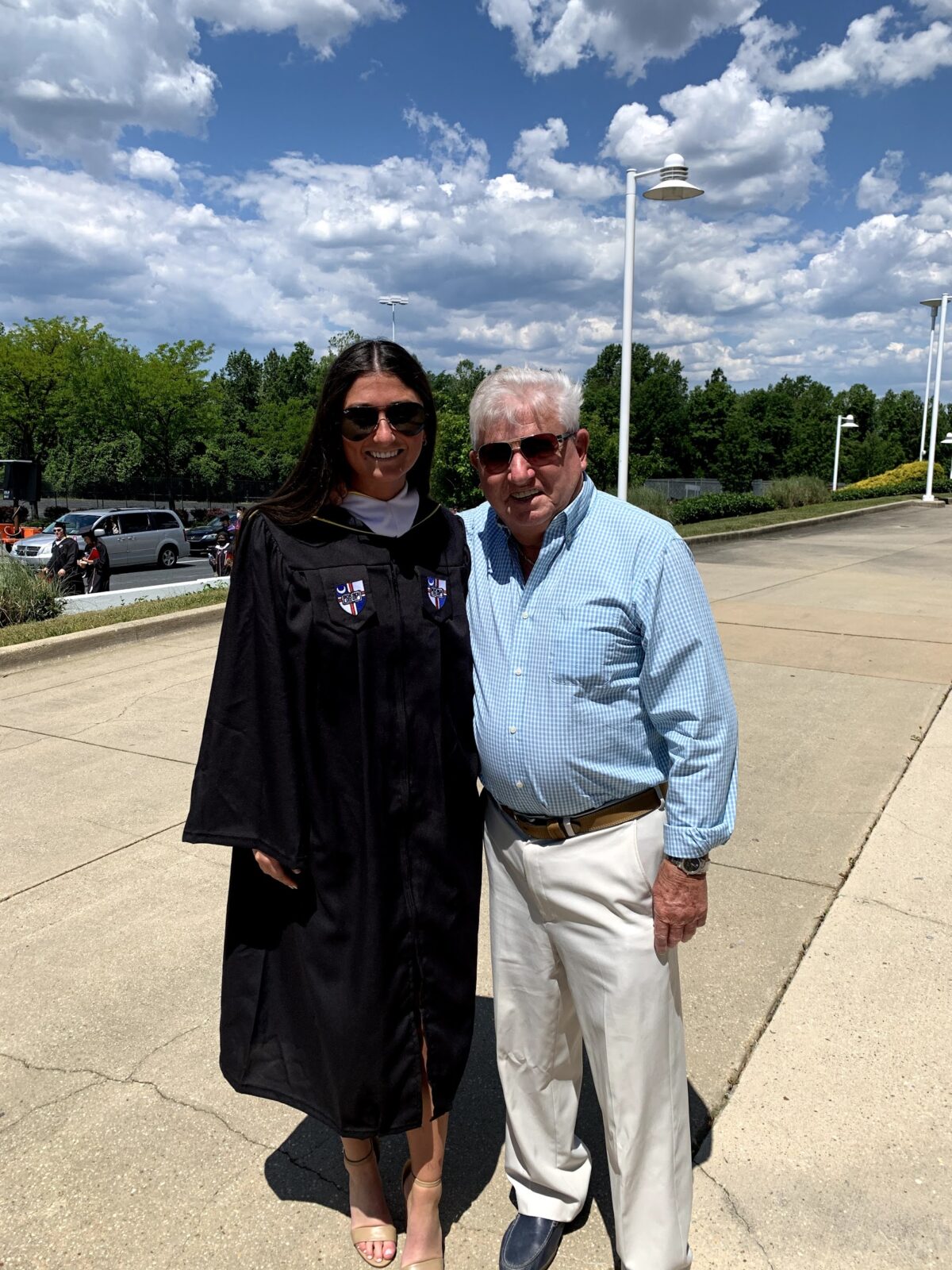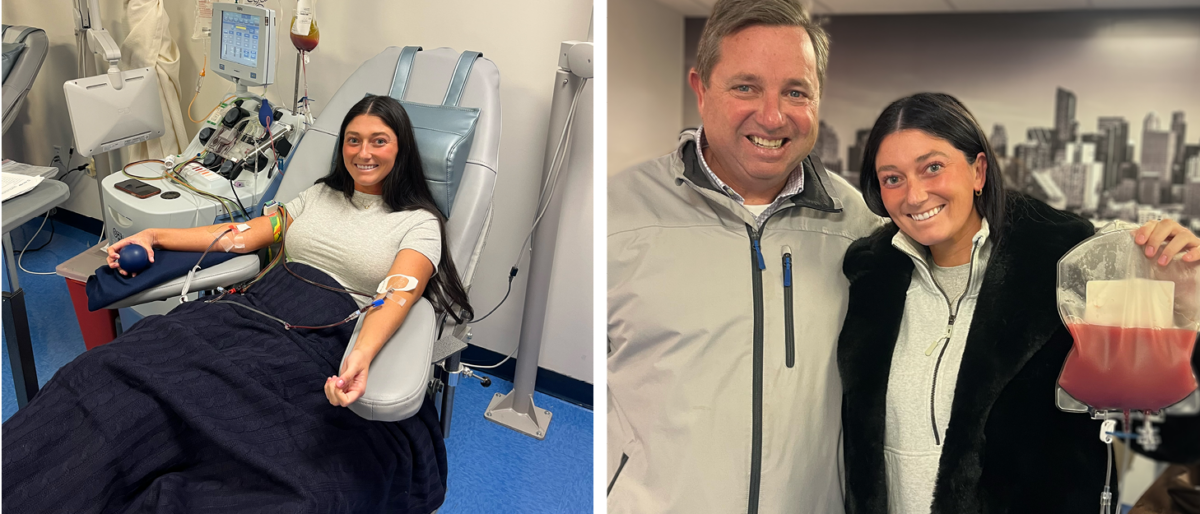BAF Changemaker: Grace Hilton

Grace Hilton of Avon-by-the-Sea, NJ with her mother and father.
Grace Hilton, BAF’s Social Media and Digital Content Director, has been an invaluable member of the foundation for nearly five years, consistently making a meaningful impact through our social media channels each and every day. Late last year, Grace had the chance to make a difference in a life beyond the BAF community, and without hesitation, she stepped in to help. We are incredibly proud of her unwavering dedication and her selfless spirit.
BAF: When did you first learn about the BAF?
GH: I discovered the Brain Aneurysm Foundation during my junior year of college while tirelessly searching for an internship amid the uncertainty of COVID-19. My roommate, Bridget, mentioned that her mom, Christine, was looking for an intern for the nonprofit she ran. Little did I know, the perfect opportunity was closer than I imagined.
I remember feeling so nervous when I interviewed with Christine and Lynn, but in May of 2020, I was thrilled to be offered a social media internship. A year later, Christine asked if I wanted to join the foundation full-time, and now, nearly five years later, I can’t imagine being anywhere else.

Working at the Brain Aneurysm Foundation is incredibly rewarding. Every day, I have the privilege of making a meaningful impact on someone’s life, all while working toward a world free from the devastation of brain aneurysms. The incredible women of BAF have become like a second family, and I’m beyond grateful to be part of this mission.

BAF: Tell us about the call you received last summer, offering you a chance to give someone a second chance at life.
GH: Late last summer, I received a call from an unfamiliar number. The caller reminded me of a moment from college when I had submitted a cheek swab to the National Marrow Donor Program (NMDP) and joined the registry as a potential donor for cancer patients. The caller informed me that I was a match for a patient with leukemia.
The National Marrow Donor Program is a nonprofit organization committed to connecting stem cell and marrow donors with patients fighting blood cancers and diseases like leukemia and lymphoma, offering life-saving treatment and hope.

During my phone call with the work-up specialist, she walked me through the entire peripheral blood stem cell (PBSC) donation process. She explained everything, from the initial testing to the donation itself, including the timeline (which was a few months away), to the preparation (several blood tests and 10 shots in the days leading up to the donation to boost my production of blood-forming cells).
After completing a health questionnaire, I was scheduled for blood tests to confirm my eligibility as a healthy candidate and a good match. However, they later found a slightly better match for the patient and asked if I would be willing to remain on standby as the back-up donor.
A few months later, I received a call letting me know the primary donor had backed out and asked if I would be willing to donate within a few weeks. Without hesitation, I said yes.
Within a week, I underwent more blood tests and an extensive physical to ensure I was still a healthy candidate. Once cleared, I began the preparation shots. For five days leading up to donation day, I injected myself with filgrastim to increase the number of blood-forming cells in my bloodstream. By the second day of injections, I started to experience mild headaches, and by day three, muscle and bone aches, along with shortness of breath. Though uncomfortable, I knew these symptoms were normal and considered them a minimal price to pay for the chance to help someone else.
BAF: What was the procedure like for you?
GH: PBSC donation is a nonsurgical procedure that takes place at a blood center or outpatient hospital facility. My donation was at the New York Blood Center, which was convenient since I live in Manhattan. After a quick drive, I shuffled into the donation center (the muscle and bone aches felt like I had just run a marathon) and started the donation process.
PBSC is collected through a standard apheresis process that requires venous access with a 16- to 18-gauge needle in both arms. The needle in my right arm extracted my blood and passed it through a machine that separated the PBSC from the rest of my blood, which was then returned via a tube into my left arm. PBSC collections take between four to eight hours, depending on how many stem cells the recipient needs, their weight, and how your body responds to the filgrastim shots.
By the end of the day, I was exhausted and still feeling some of the effects of the filgrastim shots, but I felt a deep sense of relief, knowing that my stem cells would soon be giving someone else a chance at life—and sparing their loved ones from unimaginable grief.

BAF: What have you taken away from this experience?
GH: I’m incredibly grateful to have had the opportunity to donate my stem cells. More than just a donation, I’m thankful that something as simple as this act can offer someone and their family the hope of a brighter future, sparing them from the pain of a devastating loss.
The recipient and I have been in touch, and they’ve expressed their wish to meet one day. I look forward to that moment and to seeing firsthand the impact of this experience.
If you’re able, take a moment to check out The National Marrow Donor Program and consider signing up as a donor—you could be the match that changes someone’s life.


 Brain Aneurysm Foundation
Brain Aneurysm Foundation